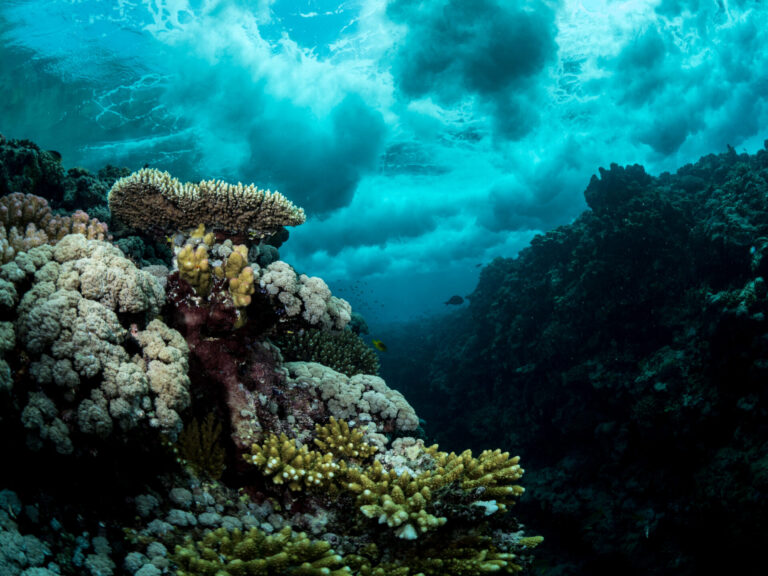Marine Science
Novel carbon source sustains deep-sea microorganism communities
A carbon source stemming from daily fish migrations is implicated in the global carbon cycle.

The first in-depth analyses of dissolved organic carbon (DOC) cycling in the Red Sea highlights the important role of migrating shoals of fish in sustaining deep-ocean microorganisms and potentially the global carbon cycle.
The biological carbon pump is a cyclical process by which inorganic carbon from the atmosphere is fixed by marine lifeforms and transported through ocean layers into the deepest waters and ocean sediments. Fish that feed at the surface at night and retreat to the mesopelagic zone (200 to 1000 meters depth) by day were thought to influence carbon cycling, but the extent of their contribution has never been explored.
Now, Maria Calleja and Xosé Anxelu Morán at KAUST’s Red Sea Research Center, and coworkers, demonstrate the impact of this daily migration on the vertical movement of carbon in the Red Sea and how it fuels the metabolism of single-celled heterotrophic prokaryotes belonging to the domains Bacteria and Archaea.
“In a previous study, our co-authors Anders Røstad and Stein Kaartvedt discovered a community of fish in the Red Sea that migrate every night from around 550 meters depth to the surface waters to feed1,” says Calleja. “We wondered how this fish migration might affect the microbial community inhabiting the same depths. Our two projects sought to clarify this by collecting data from a single Red Sea sampling site.”

KAUST researchers have shown that Benthosema pterotum or skinnycheek lanternfish are responsible for carbon transport to deep waters in the Red Sea.
© 2018 KAUST
The first study examined vertical differences in DOC concentration and the flow of carbon through microbial communities at three specific layers in the water column during the day1. Over eight days, the team monitored features such as DOC consumption, prokaryote growth and community composition in natural water samples taken from the surface, the deep layer where the fish rested during the day, and an intermediate layer at 275 meters.
Bacterial growth efficiency in the deepest layer was significantly higher than previously estimated, “suggesting a labile DOC source—one that is tasty and easily broken down by the bacteria—that helps generate larger cells,” explains Calleja. Heterotrophic bacterial communities in the mesopelagic layer were also found to be more active than those in the surface waters.
“Our second paper, led by a former KAUST post-doc who is now at the University of Exeter, Francisca García, followed changes over 24 hours along the whole water column, sampling 12 different depths (from 5 to 700 meters) every two hours2,” says Calleja. “We analyzed the dynamics between DOC, bacteria and fish movements during the 24-hour cycle.”
The researchers used flow cytometry to analyze microbe cell sizes and community structure at high temporal resolution, showing higher microbial diversity in the mesopelagic zone than expected. These deep microbial communities may be more dynamic than previously thought, thanks to this active carbon transfer of labile DOC by fish.
“If this is happening in the Red Sea, could it be happening in other marine basins and the open ocean? It may have unprecedented implications for the global ocean carbon cycle,” notes Calleja.
“These two studies are part of a wider project to determine the impact of this shortcut on global biogeochemical cycling,” adds Morán.

The RV Thuwal was the vessel used for the field work in this study
© 2018 KAUST
References
-
Garcia, F.C., Calleja, M.L., Al-Otaibi, N., Røstad, A., & Morán, X.A.G. Diel dynamics and coupling of heterotrophic prokaryotes and dissolved organic matter in epipelagic and mesopelagic waters of the central Red Sea. Environmental Microbiology 20, 2018.| article
- Calleja, M.L., Ansari, M.I., Røstad, A., da Silva, L.R., Kaartvedt, S. Irigoien, X. & Morán, X.A.G. The mesopelagic scattering layer: a hotspot for heterotrophic prokaryotes in the Red Sea twilight zone. Frontiers in Marine Science 5 259 (2018).| article
You might also like

Marine Science
A place to trial hope for global reef restoration

Marine Science
Reef-building coral shows signs of enhanced heat tolerance

Marine Science
Plastic-munching bacteria found across the seven seas

Marine Science
AI reveals the universal beauty of coral reef growth

Marine Science
Tiny crabs glow to stay hidden

Marine Science
Mass fish deaths linked to extreme marine heatwave in Red Sea

Marine Science
Weeding out the secrets of Red Sea macroalgae

Bioscience




